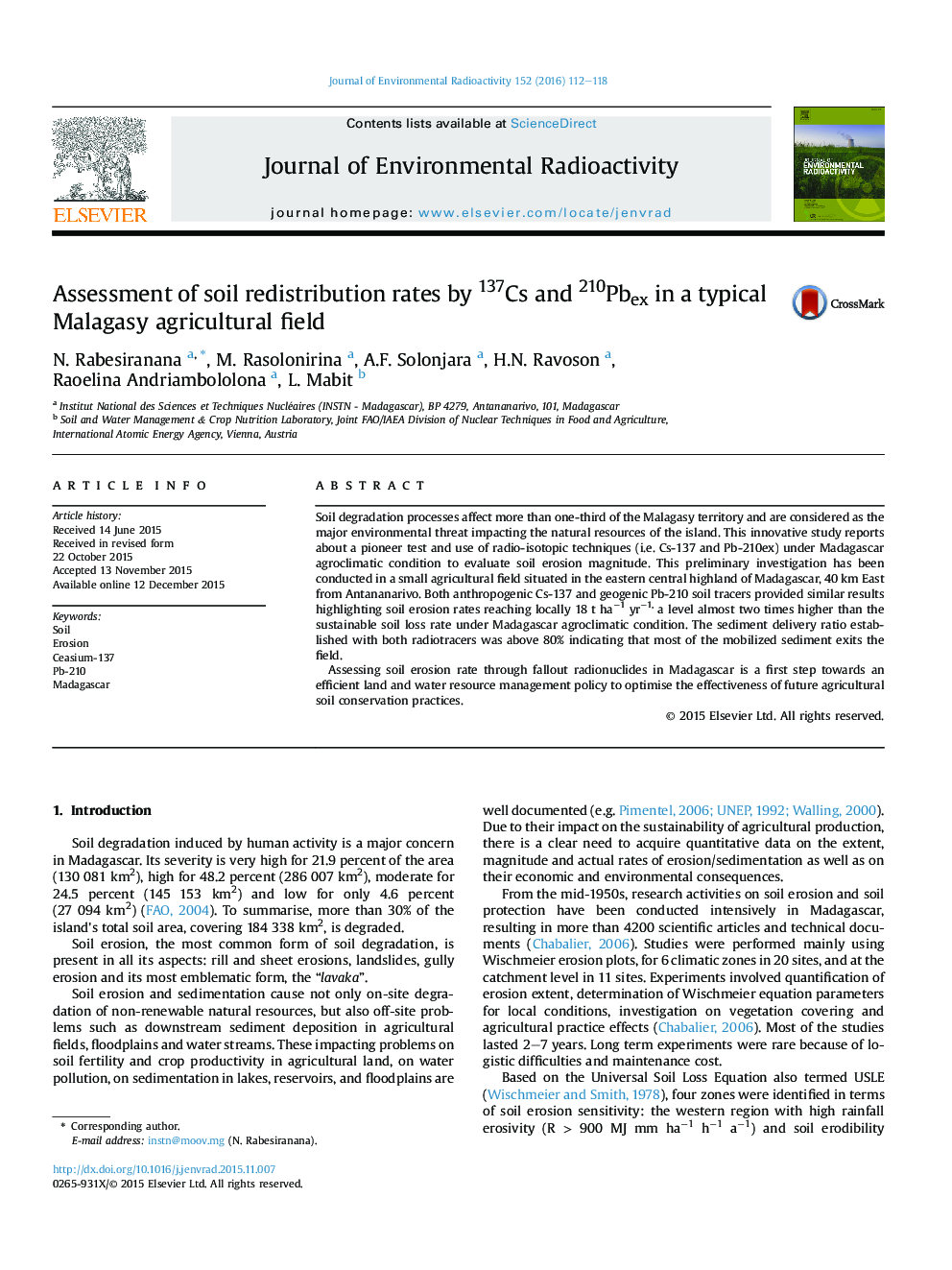| Article ID | Journal | Published Year | Pages | File Type |
|---|---|---|---|---|
| 1737772 | Journal of Environmental Radioactivity | 2016 | 7 Pages |
•A pioneer test of radioisotopic techniques under Madagascar agroclimatic condition for estimating soil erosion magnitude.•Cs-137 and Pb-210ex Mass Balance Models (MBM) conjointly used to highlight timescale discrimination of erosion process.•Timescale discrimination suggests significant increase of erosion magnitude during the last 50 years.•Estimated erosion rates above 10 t ha−1 yr−1 indicate a clear threat for the sustainability of Malagasy soil resources.•Findings indicate the potential of using jointly Cs-137 and Pb-210ex under local agroecological conditions.
Soil degradation processes affect more than one-third of the Malagasy territory and are considered as the major environmental threat impacting the natural resources of the island. This innovative study reports about a pioneer test and use of radio-isotopic techniques (i.e. Cs-137 and Pb-210ex) under Madagascar agroclimatic condition to evaluate soil erosion magnitude. This preliminary investigation has been conducted in a small agricultural field situated in the eastern central highland of Madagascar, 40 km East from Antananarivo. Both anthropogenic Cs-137 and geogenic Pb-210 soil tracers provided similar results highlighting soil erosion rates reaching locally 18 t ha−1 yr−1, a level almost two times higher than the sustainable soil loss rate under Madagascar agroclimatic condition. The sediment delivery ratio established with both radiotracers was above 80% indicating that most of the mobilized sediment exits the field.Assessing soil erosion rate through fallout radionuclides in Madagascar is a first step towards an efficient land and water resource management policy to optimise the effectiveness of future agricultural soil conservation practices.
Graphical abstractFigure optionsDownload full-size imageDownload as PowerPoint slide
